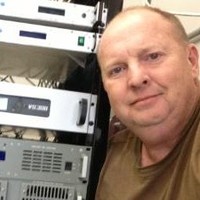Choosing Between STL or IP Radio Links

[February 2014] If your transmitter is not at your studio location, how you get the program audio to the transmitter is an important consideration in terms of audio quality, reliability, and, as Fred Francis notes, cost.
In recent years, traditional STL (Studio to Transmitter) links have become overly burdensome (and costly) to license and do not provide any service other than to get your audio from point A to point B.
On the other hand, with the availability of inexpensive IP (Internet Protocol) radio links and excellent quality audio over IP equipment, it has become less expensive to install a system that does much more than merely get your audio from point A to B.
Do not get me wrong. I am not bashing traditional STL systems. I am just offering an alternative that might work in your situation, provide additional services, and save you money.
Typical Traditional STL
Let us take a moment to look at a typical traditional STL equipment list. (Of course, prices may and will vary, and are estimated in these examples.)
1 Set Armstrong XLINK $ 5000.00
2 PR-950 Antennas 1600.00
100 feet 7/8 coax 775.00
4 connectors 132.00
2 Ground kits 34.50
Licensing fee 1500.00
——————————————————–
Total $ 9041.50
(Without installation cost)
An IP Based Solution
Now let us look at a recently quoted IP radio system for a 17-mile link at 90+ Mbps.
2 Ubiquity Rocket M5 Titanium $ 458.00
2 Ubiquity Rocket Dish 5G-30 278.00
2 Radome cover for Rocket Dish 138.00
2 Ubiquity Tough Switch 8 port POE 340.00
1 Ubiquity Tough Cable Pro 160.00
100 Shielded Connectors 49.00
——————————————————–
Sub-total $1423.00
Tieline Bridge-It Basic system 2598.00
——————————————————–
Total $ 4021.00 (Without installation cost)
More Than Just Program Audio
Once the link is established there are many more possible things that you can do with the bandwidth you now have between your sites than you can with a traditional STL.
Add a receiver to feed your off-air audio back to the studio through the Tieline Bridge-It, you could use the return feed for an RPU receiver, or switch between the two when needed. Remote controls, logging into transmitters directly, security cameras, VOIP phones, and intercom systems are all able to be used in a system like this.
You also can use the same system to connect two studios together utilizing the relay closures with the Tieline or to start a break on the automation system.
Of course, if you have a traditional STL you can keep it and use the setup for a backup audio delivery system – and still make use of all the added features without paying a monthly fee for Internet at the tower site.
By the way, the Tieline equipment mentioned above was used only as an example. There are many companies that make equipment that works equally as well. I have worked on stations that are using Axia Nodes through a 5.8 GHz system, all the way down to the cheap Barix Boxes.
– – –
Fred Francis is the owner of Xenirad Broadcast Engineering in Prichard, WV. You can contact Fred at: Fred@Xenirad.com
– – –
Are articles like this helpful to you? If so, you are invited to sign up for the one-time-a-week.BDR Newsletter.
It takes only 30 seconds by clicking here.
– – –
